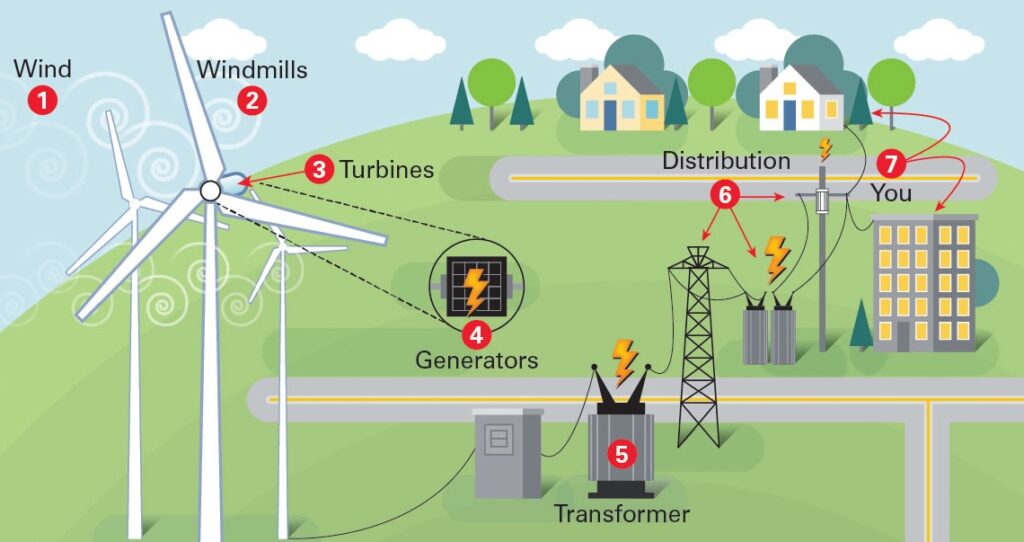Sign up for daily news updates from CleanTechnica on email. Or follow us on Google News!
Last Updated on: 22nd February 2025, 11:38 am
US President Trump is rapidly working his way up to the status of King, an effort that will ultimately fail — although, not before he does some serious damage to, well, everything. Take renewable energy, for example. Trump practically snuffed out the entire US offshore wind industry upon taking office. Nevertheless, activity still keeps bubbling up onshore as illustrated by the new Upper Midwest Energy Plan presented by the gigantic utility Xcel Energy.
What do you think about having a King in the Oval Office? If you have any thoughts about that, drop a note in the comment thread or, better yet, call your representatives in Congress.
Renewable Energy To Coal: Don’t Let The Door Hit You On The Way Out
Xcel’s renewable energy journey has been long, tedious, and propelled partly by lawsuits and lawmaking. Still, signs of acceleration have emerged, as illustrated by the company’s new goals for bringing more wind, solar, and energy storage to Minnesota.
Last week, the Minnesota Public Utilities Commission approved the Upper Midwest Energy Plan proposed by Xcel. The new plan supports Xcel’s goal of retiring all of its coal power plants in the region by 2030.
With coal out of the picture, Xcel expects to cut emissions 80% by 2030, compared to a 2005 baseline. If all goes according to plan, Xcel could even blow past the 80% mark. The company estimates that it could potentially get to 88% by 2030.
The new plan has something for everyone — except coal, that is. Renewable energy comes out on top, mainly through the addition of 3,430 megawatts of wind energy. Solar also gets a nod with 550 megawatts, for a combined total of almost 4 gigawatts.
Some parts of the plan won’t make everyone happy. To get to 80%, Xcel will delay the retirement of its two nuclear plants in the region. A new gas power plant is also in the works.
Xcel states that the gas power plant will convert to hydrogen at some future date, indicating that the gas-to-hydrogen trend may have legs. Gas turbine stakeholders like Mitsubishi, for example, began introducing hydrogen-capable gas turbines several years ago.
In terms of decarbonization, gas-to-hydrogen doesn’t make much sense under the current state of affairs. About 95% of the hydrogen produced in the US currently comes from natural gas. However, a renewable energy angle has begun to emerge in the form of green hydrogen, which is extracted from water in electrolysis systems powered by wind, solar, or other renewables. Extracting hydrogen from biomass or wastewater is another emerging non-fossil pathway for hydrogen turbines.
Getting Renewable Energy From Here To There: It’s Complicated
Building new transmission lines for renewable energy could be the sticky wicket in Xcel’s plan, which depends on approval of the new Minnesota Energy Connection transmission line.
The proposed transmission line will support the retirement of the Sherco coal power plant, located near the city of Becker. The site is already hosting a solar array. The new line will hook it up Lyon County to the southwest, re-using existing grid connections as required by federal regulations.
“The new transmission infrastructure is designed to enable more than 2,000 megawatts of renewable energy to replace the electricity produced by the existing coal plants,” Xcel explains, adding that it opens “a path for new renewable energy in the wind-rich southern and southwest Minnesota regions.”
The Long Duration Energy Storage Angle
Lithium-ion battery arrays have shouldered much of the energy storage burden for wind and solar resources, though electricity planners anticipate that new, long duration energy storage technologies will be needed to handle the massive quantities of renewable energy circulating around the sparkling green grid of the future.
Xcel already has a 300-megawatt lithium-ion array up and running at the Sherco site. Under the new plan, the company expects to add 600 more megawatts to its portfolio.
The company has also been checking out some long duration options. At the Becker site, they are currently pilot-testing a new iron-air battery developed by the Massachusetts firm Form Energy. Form has set up shop in West Virginia, transforming the iconic coal state into an epicenter of coal-killing energy storage technology.
Oh the irony, it burns. “Form’s multi-day battery will reform the global electricity system to run on 100% low-cost renewable energy, every day of the year,” enthuses the high profile clean tech organization Breakthrough Energy, which provided funding for the Becker test.
More Energy Storage For More Renewable Energy
In support of its renewable energy journey, Xcel also plans to bring a thermal energy storage proposal to the Minnesota Public Utilities Commission sometime later this year. Activity in the thermal storage area covers a lot of ground, with high tech firebricks being among the solutions.
The idea behind brick-based thermal energy storage is relatively simple. Embed some wires in a brick, heat them up with electricity, and then figure out how to transfer the heat into working energy.
Keep an eye on the Boston firm Electrified Thermal Solutions. Their new firebrick formula ditches the wires in favor of an integrated semiconductor material.
As of 2023 Xcel was also on track to investigate a liquid metal energy storage system developed by another Massachusetts startup, Ambri (formerly Liquid Metal Battery Corporation). Ambri took a detour through bankruptcy last year and emerged from Chapter 11 in July, so that project appears to be on hold. If it does pick up again, Ambri will install a 300-kilowatt system at the SolarTAC research facility in Colorado.
“The system will use the GridNXT Microgrid Platform at SolarTAC to integrate multiple generation sources, such as solar and wind, along with inverters, load banks, and 3-phase distribution connections and communications,” Ambri explains.
“This collaboration represents the first field-deployed utility pilot system for Ambri, showcasing its innovative Liquid Metal™ batteries in a real-world setting. It also marks the initial evaluation and demonstration of these batteries by a major U.S. utility,” they add.
Meanwhile, as Trump and his top advisor Elon Musk rampage through the federal government, renewable energy stakeholders are scrambling to keep the US wind and solar industries from losing momentum.
That’s going to be a tough row to hoe. The Republican majority in the House and Senate could exercise their authority to prevent further damage and restore normal operations to federal agencies, but they have been content to twiddle their thumbs while the judicial branch attempts to hold up its end of the Constitution.
What are they waiting for? That’s anybody’s guess. Perhaps they are waiting to hear from their constituents.
Image (cropped): Renewable energy stakeholders in the US continue to hold the decarbonization fort with new wind, solar, and energy storage projects (courtesy of Xcel Energy).
Chip in a few dollars a month to help support independent cleantech coverage that helps to accelerate the cleantech revolution!
Have a tip for CleanTechnica? Want to advertise? Want to suggest a guest for our CleanTech Talk podcast? Contact us here.
Sign up for our daily newsletter for 15 new cleantech stories a day. Or sign up for our weekly one if daily is too frequent.
CleanTechnica uses affiliate links. See our policy here.
CleanTechnica’s Comment Policy

